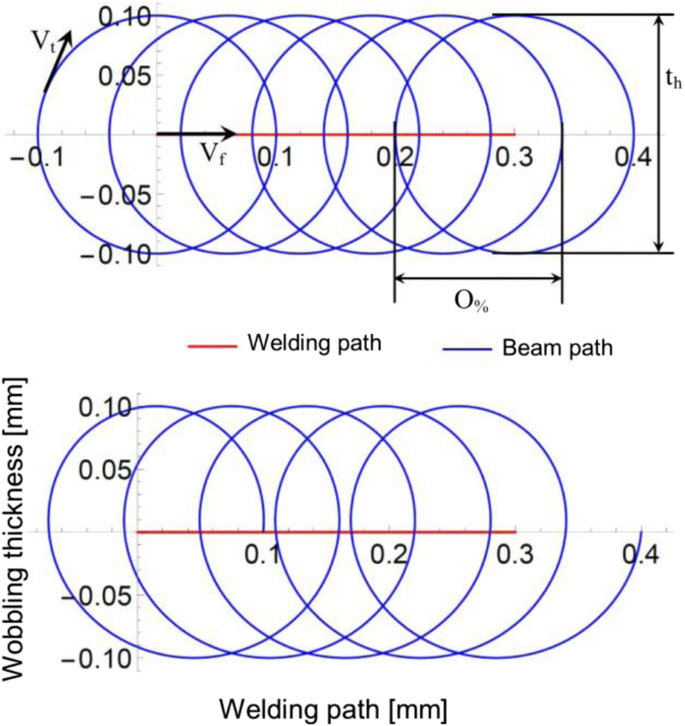Katoh Tokisue 2004 and diffusion bonding Ohashi 2004. Using a laser beam which is precisely focused on the metals you melt each of the metals together until they form one connected joint.
Metals Special Issue Dissimilar Material Welding And Joining
Ultrasonic welding can be used only for very thin materials or small parts.

Laser welding dissimilar metals chart. WELDING DISSIMILAR METALS. Friction welding is also used for joining dissimilar metals and for making composite transition inserts. In order to solve these problems many studies of the dissimilar metal joining have been conducted such as resistance welding Okita 2004 laser welding Katayama 2004 explosive welding Satou 2004 friction stir welding Okamura.
Other applications also profit from higher material absorption at blue wavelengths. Dissimilar metal welding occurs when two metal alloys of different base metals or two compositions within the same base metal are joined. Laser welding is capable of precise energy control thus enabling the welding of precision micro devices and it can be applied to many metals especially for some difficult metals and dissimilar metals.
The two metals being joined and the filler metal used to join them. Another variable might be heat input con-trol. Laser fusion welded dissimilar joints between stainless steel 316 and titanium grade 2 have been investigated as a simplified model for the NiTi - stainless steel dissimilar material pair.
Our knowledgeable sales personnel are available to discuss your next cutting application. Particular application lends itself to laser welding. Weldable 1100 to 2219.
In fact blue lasers are appropriate for any application where thin metals need to be reliably and rapidly joined with low to no defects. The beam provides a concentrated heat source allowing for narrow deep welds and high welding rates. This higher ferrite content can minimize weld dilution and prevent weld cracking.
35 Procedures for Welding Transition Joints. Ultrasonic welding is also used for welding dissimilar metals since very little heat is developed at the weld joint. In most cases when welding dissimilar metals or more specifically carbon to SS we recommend you use a 309 filler metal because of its higher ferrite content.
Various dissimilar combinations of metal have been welded including steel to copper base alloys steel to aluminum. Please see the chart on the next page for further information about common metals and their. 35 Austenitic Stainless Steels to Low Carbon Steels.
Tensile strengths of the joints are observed to be lower than the base materials with. The 309LSi has a low carbon content and a higher silicon content hence the LSi in the designator. Laser welding is a non-contact welding process that does not require pressure but requires the use of inert gas to prevent oxidation of the molten pool which is occasionally used for filler metals.
Weld Metal Buttering Layer of Pure Ni Copper Steel Electrode Copper Carbon or Low Alloy Steel Joint Parts Material Thermal ExpCont Coeff. Martensite phase within the partially mixed zone in dissimilar welds between ferritic steel and a 309L stainless steel. While most metals and even mixed metals can be laser welded some.
601 is a nickel-base alloy with high chromium and an aluminum addition. Laser welding works by using a focused beam of light to weld metals together. If the two metals are not two wildly dissimilar such as if you were using two austenitic steels as we mentioned earlier the two will often join seamlessly together.
In dissimilar-metal welding the prop-erties of three metals must be considered. When the beam interacts with the surface of the material laser beam melts the materials to be joined along the joint. This welding process works in almost exactly the same way as if you were welding two similar metals together.
For example if one of the metals being joined is welded using preheat when welding to itself pre-heat should be used in making a DMW. A variety of factors must be considered when joining dissimilar metals. Dissimilar metals can be welded together Laser beam can be positioned into tight geometry Laser Cutting Our precision cutting of materials such as plastic or metal tubing is one of our strengths.
For example when welding A514a minimum 110-KSI tensile low-alloy quench-and-tempered steelto A36 steel with a minimum 58-KSI tensile strength choose a filler that more closely matches the A36 base metal such as a filler metal with 70-KSI tensile the lowest strength typically available on the market. Tolerances within 00005 or less Kerf width as small as 00007. Outstanding oxidation resistance to 2200F good strength and carburization resistance.
As a result solid-phase bonding is mainly put to practical use. 36 Ferritic and Martensitic Stainless Steels to Carbon or Low-Alloy Steels. Blue lasers have demonstrated advantages for welding copper stainless steel and aluminum.
625 alloy is high creep-rupture strength oxidation resistant to 1800F 982C. 1K x 10-6 YS ksi UTS ksi Stainless Steel 316 L 19 42 84 Weld Metal 308 L 19 29 84 Buttering 309 L 19 40 95 Alloy Steel A 516 G60 12 29 60 - 80. But needs to be welded with dissimilar aluminum Aluminum 2219 Welds well but needs to be welded with dissimilar aluminum.
Continuous Wave Laser Welding Pulsed Laser Welding. Weldable 2219 to 2219.
The Welding Parameters And Heat Input Of Low Carbon Steel To 3cr12 Download Scientific Diagram
40 Welding Dissimilar Metals Youtube Welding Schools Welding Welding Tips
Welding Symbol Guide Charts And Types Welding Welding Tips Engineering Tools
Pin By Thomas Freriks On Plumbing Piping And Instrumentation Diagram Process Engineering Mechanical Engineering Design
Mechanical And Metallurgical Characterization Of Laser Welding On P91 Ferritic Steel And Incoloy 800ht Dissimilar Joints
Pdf Laser Welding Dissimilar Materials Of Aluminum To Steel An Overview
Metals Special Issue Dissimilar Material Welding And Joining
Current Research And Development Status Of Dissimilar Materials Laser Welding Of Titanium And Its Alloys Sciencedirect
Laser Welding Of Thin Copper And Aluminum Sheets Feasibility And Challenges In Continuous Wave Welding Of Dissimilar Metals Springerlink


0 comments:
Post a Comment